Election for the governorship of the U.S. state of Indiana
| |||||||||||||||||
| |||||||||||||||||
| |||||||||||||||||
The 1868 Indiana gubernatorial election was held on October 13, 1868. Incumbent Republican Conrad Baker defeated Democratic nominee Thomas A. Hendricks with 50.14% of the vote.
| |||||||||||||||||
| |||||||||||||||||
| |||||||||||||||||
| Elections in Indiana |
|---|
 |
The 1868 Indiana gubernatorial election was held on October 13, 1868. Incumbent Republican Conrad Baker defeated Democratic nominee Thomas A. Hendricks with 50.14% of the vote.
| Party | Candidate | Votes | % | ±% | |
|---|---|---|---|---|---|
| Republican | Conrad Baker (incumbent) | 171,523 | 50.14% | ||
| Democratic | Thomas A. Hendricks | 170,602 | 49.87% | ||
| Majority | 921 | ||||
| Turnout | |||||
| Republican hold | Swing | ||||

The 1876 United States presidential election was the 23rd quadrennial presidential election, held on Tuesday, November 7, 1876, in which Republican nominee Rutherford B. Hayes faced Democrat Samuel J. Tilden. It was one of the most contentious presidential elections in American history. Its resolution involved negotiations between the Republicans and Democrats, resulting in the Compromise of 1877, and on March 2, 1877, the counting of electoral votes by the House and Senate occurred, confirming Hayes as President. It was the second of five U.S. presidential elections in which the winner did not win a plurality of the national popular vote.
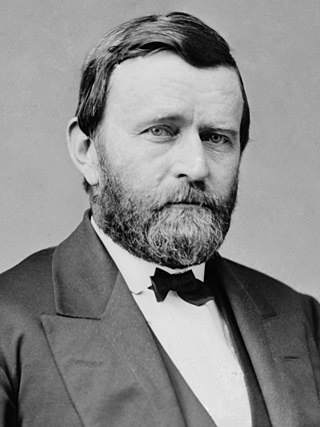
The 1868 United States presidential election was the 21st quadrennial presidential election, held on Tuesday, November 3, 1868. In the first election of the Reconstruction Era, Republican nominee Ulysses S. Grant defeated Horatio Seymour of the Democratic Party. It was the first presidential election to take place after the conclusion of the American Civil War and the abolition of slavery. It was the first election in which African Americans could vote in the reconstructed Southern states, in accordance with the First Reconstruction Act.

Thomas Andrews Hendricks was an American politician and lawyer from Indiana who served as the 16th governor of Indiana from 1873 to 1877 and the 21st vice president of the United States from March until his death in November 1885. Hendricks represented Indiana in the U.S. House of Representatives (1851–1855) and the U.S. Senate (1863–1869). He also represented Shelby County, Indiana, in the Indiana General Assembly (1848–1850) and as a delegate to the 1851 Indiana constitutional convention. In addition, Hendricks served as commissioner of the General Land Office (1855–1859). Hendricks, a popular member of the Democratic Party, was a fiscal conservative. He defended the Democratic position in the U.S. Senate during the American Civil War and Reconstruction era and voted against the Thirteenth, Fourteenth, and Fifteenth Amendments to the U.S. Constitution. He also opposed Radical Reconstruction and President Andrew Johnson's removal from office following Johnson's impeachment in the U.S. House.
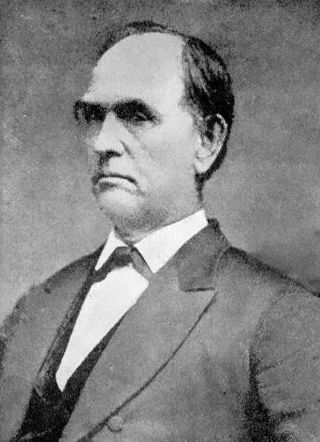
Augustus Caesar Dodge was a Democratic delegate to the U.S. House of Representatives from Iowa Territory, a U.S. minister to Spain, and one of the first set of United States Senators to represent Iowa after it was admitted to the Union as a state. His father, Henry Dodge, served as a U.S. Senator from Wisconsin; the two were the first and so far the only father-son pair to serve concurrently in the Senate, which they did from 1848 to 1855.

Horatio Seymour was an American politician. He served as Governor of New York from 1853 to 1854 and from 1863 to 1864. He was the Democratic Party nominee for president in the 1868 United States presidential election, losing to Republican Ulysses S. Grant.
The 1868 Democratic National Convention was held at the Tammany Hall headquarters building in New York City between July 4, and July 9, 1868. The first Democratic convention after the conclusion of the American Civil War, the convention was notable for the return of Democratic Party politicians from the Southern United States.

Conrad Baker was an American attorney, military officer, and politician who served as state representative, 15th lieutenant governor, and the 15th governor of the U.S. state of Indiana from 1867 to 1873. Baker had served in the Union Army during the American Civil War, rising to the rank of colonel, but resigned following his election as lieutenant governor, during which time he played an important role in overseeing the formation and training of states levies. He served as acting-governor for five months during the illness of Governor Oliver Morton, and was elevated to Governor following Morton's resignation from office. During Baker's full term as governor, he focused primitively on the creation and improvement of institutions to help veterans and their families that had been disaffected by the war. He also championed the post-war federal constitutional amendments, and was able to successfully advocate their acceptance.
The 1888 Democratic National Convention was a nominating convention held June 5 to 7, 1888, in the St. Louis Exposition and Music Hall in St. Louis, Missouri. It nominated President Grover Cleveland for reelection and former Senator Allen G. Thurman of Ohio for vice president.
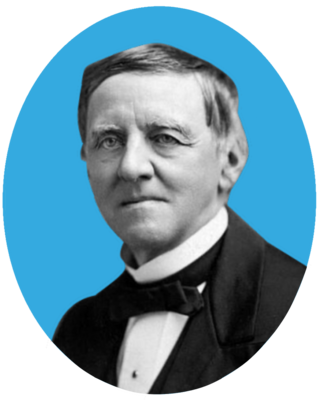
The 1876 Democratic National Convention assembled in St. Louis just nine days after the conclusion of the Republican National Convention in Cincinnati.
The 1884 Democratic National Convention was held July 8–11, 1884 and chose Governor Grover Cleveland of New York their presidential nominee with the former Governor Thomas A. Hendricks of Indiana as the vice presidential nominee.
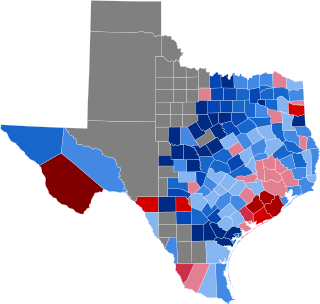
The 1872 United States presidential election in Texas was held on November 5, 1872, as part of the 1872 United States presidential election. State voters chose eight electors to represent the state in the Electoral College, which chose the president and vice president.

The 1876 U.S. presidential election occurred at the twilight of Reconstruction and was between Republican Rutherford B. Hayes and Democrat Samuel J. Tilden. After an extremely heated election dispute, a compromise was eventually reached where Hayes would become U.S. President in exchange for the end of Reconstruction and a withdrawal of U.S. federal troops from the South.

In 1868, the Democrats nominated former New York Governor Horatio Seymour for President and Francis Preston Blair Jr. for Vice President. The Seymour-Blair ticket ran on a platform which supported national reconciliation and states' rights, opposed Reconstruction, and opposed both Black equality and Black suffrage. Meanwhile, the Republican presidential ticket led by General Ulysses S. Grant benefited from Grant's status as a war hero and ran on a pro-Reconstruction platform. Ultimately, the Seymour-Blair ticket ended up losing to the Republican ticket of General Ulysses S. Grant and House Speaker Schuyler Colfax in the 1868 U.S. presidential election.

The 1884 United States presidential election in Tennessee took place on November 4, 1884, as part of the 1884 United States presidential election. Tennessee voters chose twelve representatives, or electors, to the Electoral College, who voted for president and vice president.

The 1876 Indiana gubernatorial election was held on October 10, 1876. Democratic nominee James D. Williams defeated Republican nominee Benjamin Harrison with 49.06% of the vote.

The 1872 Indiana gubernatorial election was held on October 8, 1872. Democratic nominee Thomas A. Hendricks defeated Republican nominee Thomas M. Browne with 50.12% of the vote.

The 1860 Indiana gubernatorial election was held on October 9, 1860. Republican nominee Henry Smith Lane defeated Democratic nominee Thomas A. Hendricks with 51.89% of the vote.

The 1876 United States presidential election in Kentucky took place on November 7, 1876, as part of the 1876 United States presidential election. Kentucky voters chose twelve representatives, or electors, to the Electoral College, who voted for president and vice president.
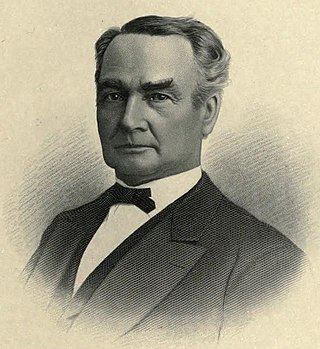
Samuel Elliott Perkins was an American lawyer, newspaper editor, and judge from the state of Indiana. He served as a Justice on the Indiana Supreme Court from January 21, 1846 to January 3, 1865, and again from January 1, 1877 until his death on December 17, 1879.
Oscar B. Hord was an American politician and lawyer who served as the sixth Indiana Attorney General from November 3, 1862 to November 3, 1864.